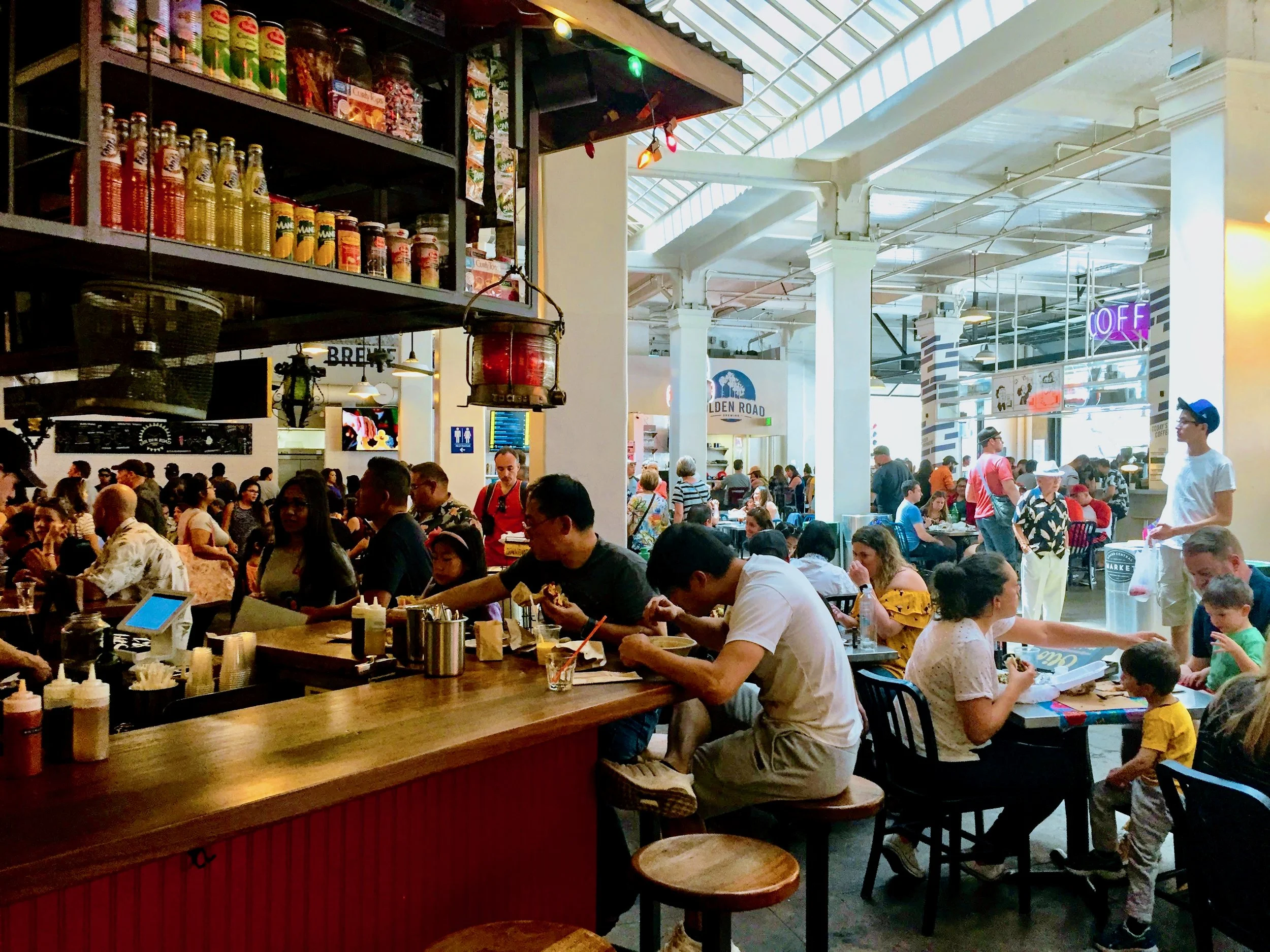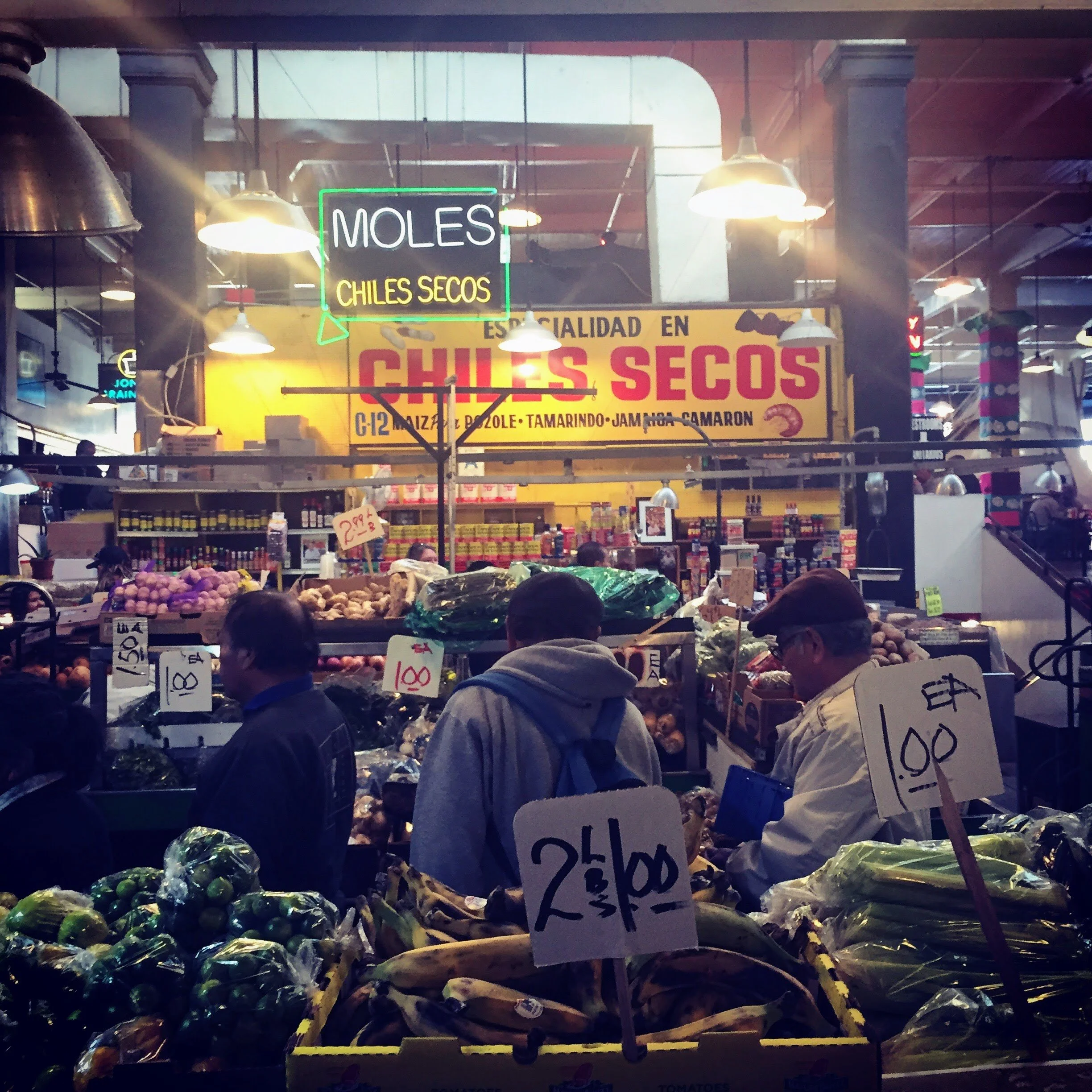Grand Central Market
To know the market is to know the original heart of Los Angeles. It is the very best of what downtown, and therefore the whole city, ought to be.
Southern California has been home, or the home I return to, for much of my life. The region isn't easy to understand, but with some effort it reveals itself to the curious. Its immense scale and cultural diversity are almost incomprehensible, and its visual character endlessly fascinates.
The region is impossible to swallow in one gulp, or to make sense of at a glance. It takes time to absorb it all.
But sometimes I just want to drink in what the region is for me. I want to spend some time absorbing its heart—which is, to me, still the great and complex city of Los Angeles.
In those moments I go deep downtown. At the foot of the charming old funicular that climbs the highest hill in the city's historic quarter sits an big old food hall.
When I'm there, I'm finally home, in the center of this place that they say has no heart.
Grand Central Market is Los Angeles.
It's the neon, the humor, the casual energy.
It's the open air. No doors here; it just flows, right in from the city around it.
It's the down-tempo hip hop, the old school candy seller, the fruit and vegetable stand.
It's the slant of afternoon light hitting me just right as I perch at the counter of G&B with beats on the speakers as the whole city buzzes around me.
This is the mellow heart and soul of it all.
The chai here is housemade and phenomenal. Everything I've ever had here is phenomenal.
It's the pork belly sisig at Sari Sari. Best I've ever had. Worth every last slightly excessive dollar.
This place sits in perfect balance between old and new LA, between tradition and continuity. It is the expression of creativity that is the throughline of this city.
To know Grand Central Market is to know the original heart of Los Angeles. It is the very best of what downtown, and therefore the whole city, ought to be.
The place is just so full of people. It has its own rhythms. It's different. Creative ideas exist side-by-side here, each made more interesting for proximity to the others.
With a few concessions to try-hard late-stage capitalism (artisanal peanut butter and jelly, anyone?), the place is just so effortlessly cool, because it is so effortlessly itself. It has adapted over the years without ever losing its primary purpose: to feed the city.
That, somehow, is Los Angeles. All the possibility, all the soul, all the heat, everything clashing with everything else, always just about to turn its back on its history before it tugs a bit of it into the future. That is this city, complicated and delightful, maddening and seductive.
Big central food markets were a feature of most major American cities back when Los Angeles still had the world's largest surface transit network. That's all changed now, and Americans drive their cars on freeways to climate-controlled grocery stores with endless miles of identically packaged junk flown or trucked in from the ends of the earth.
So I am very glad indeed that an old market hall still remains, albeit in very contemporary clothes. Maybe that's as it should be: our urban social infrastructure is right to adapt, with maximum practicality and only a dash of nostalgia, to the local needs of the day. May this place live on, I say, and keep on inspiring us to knit history and possibility together.

